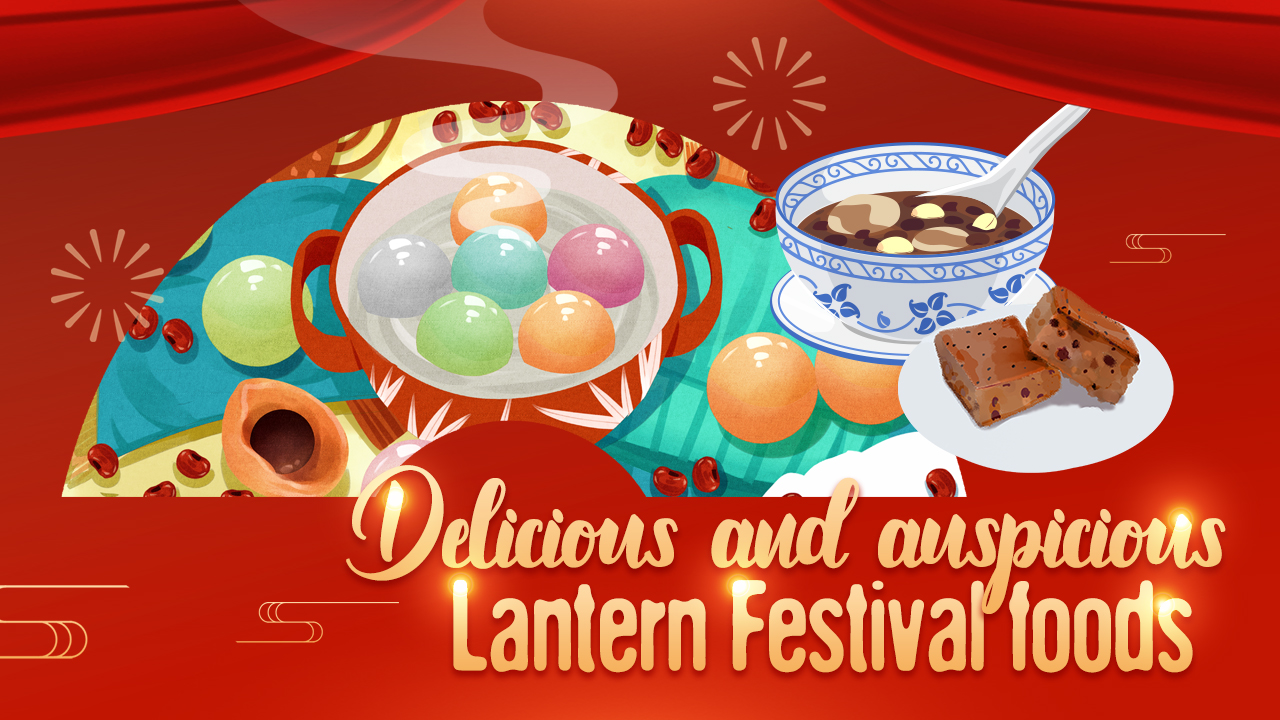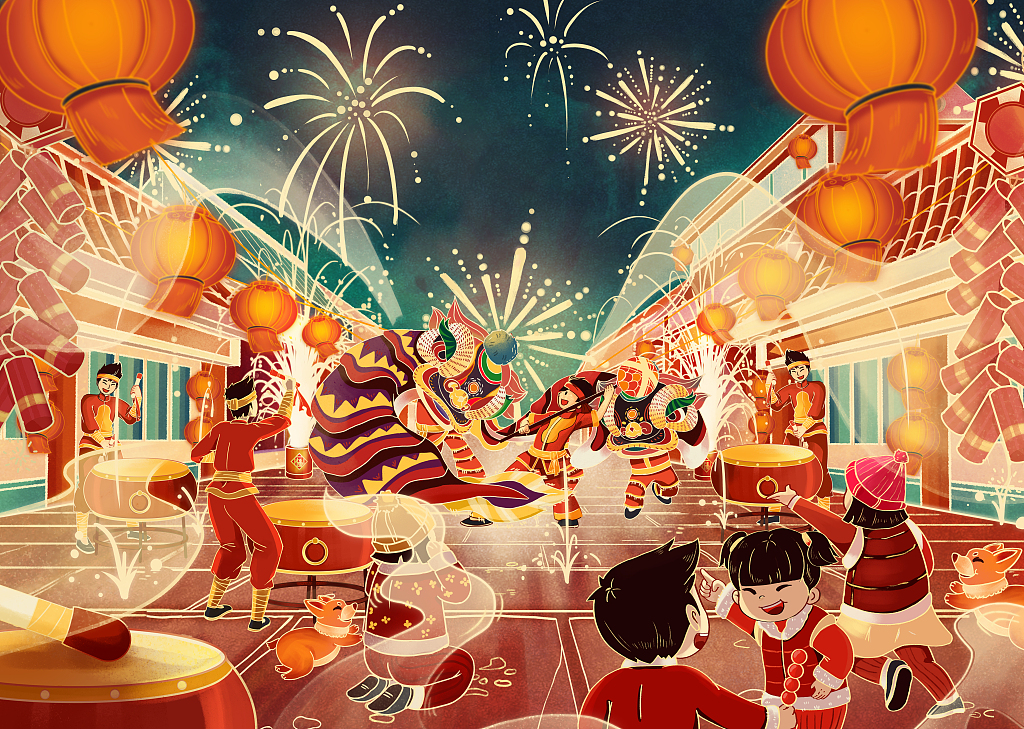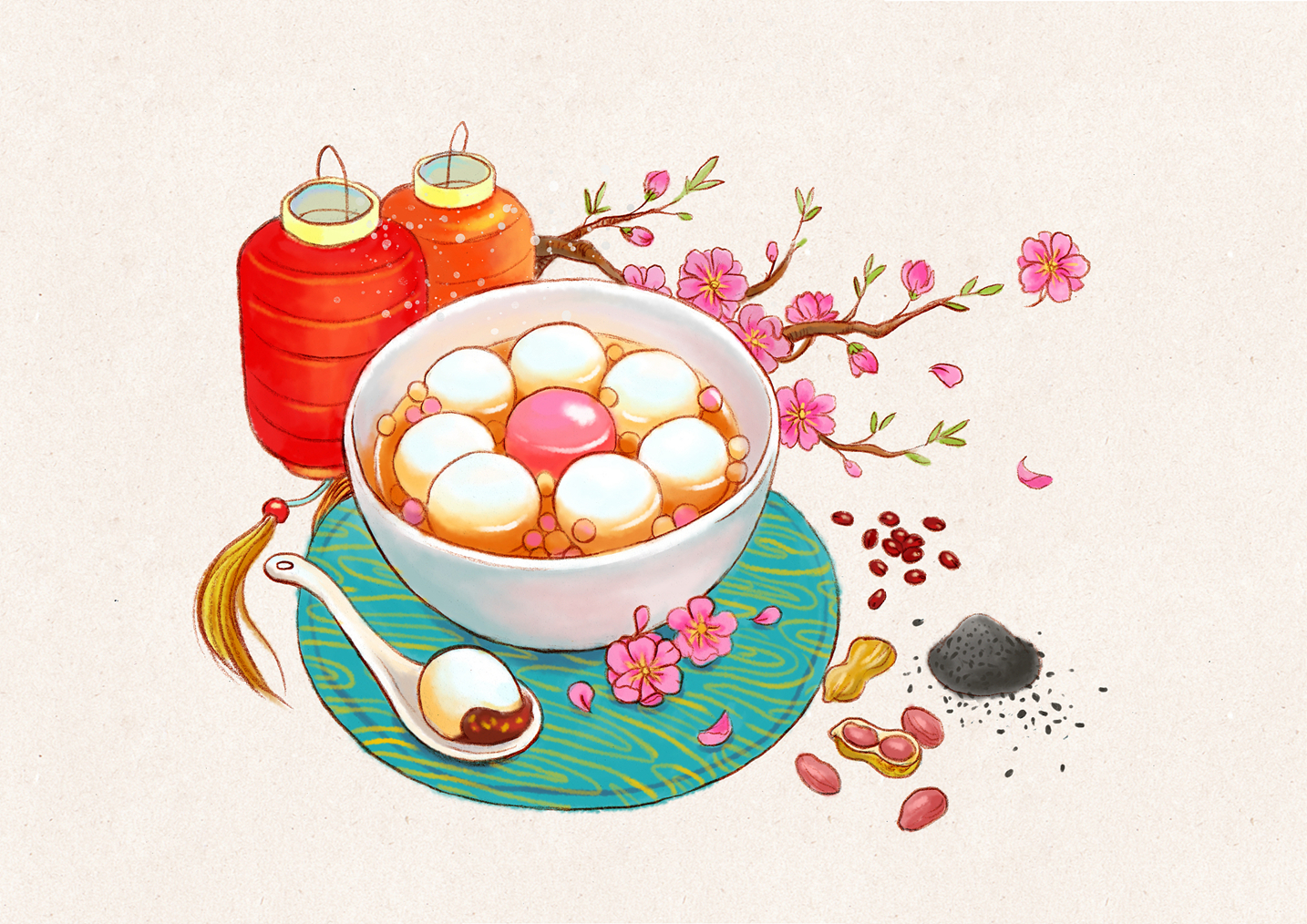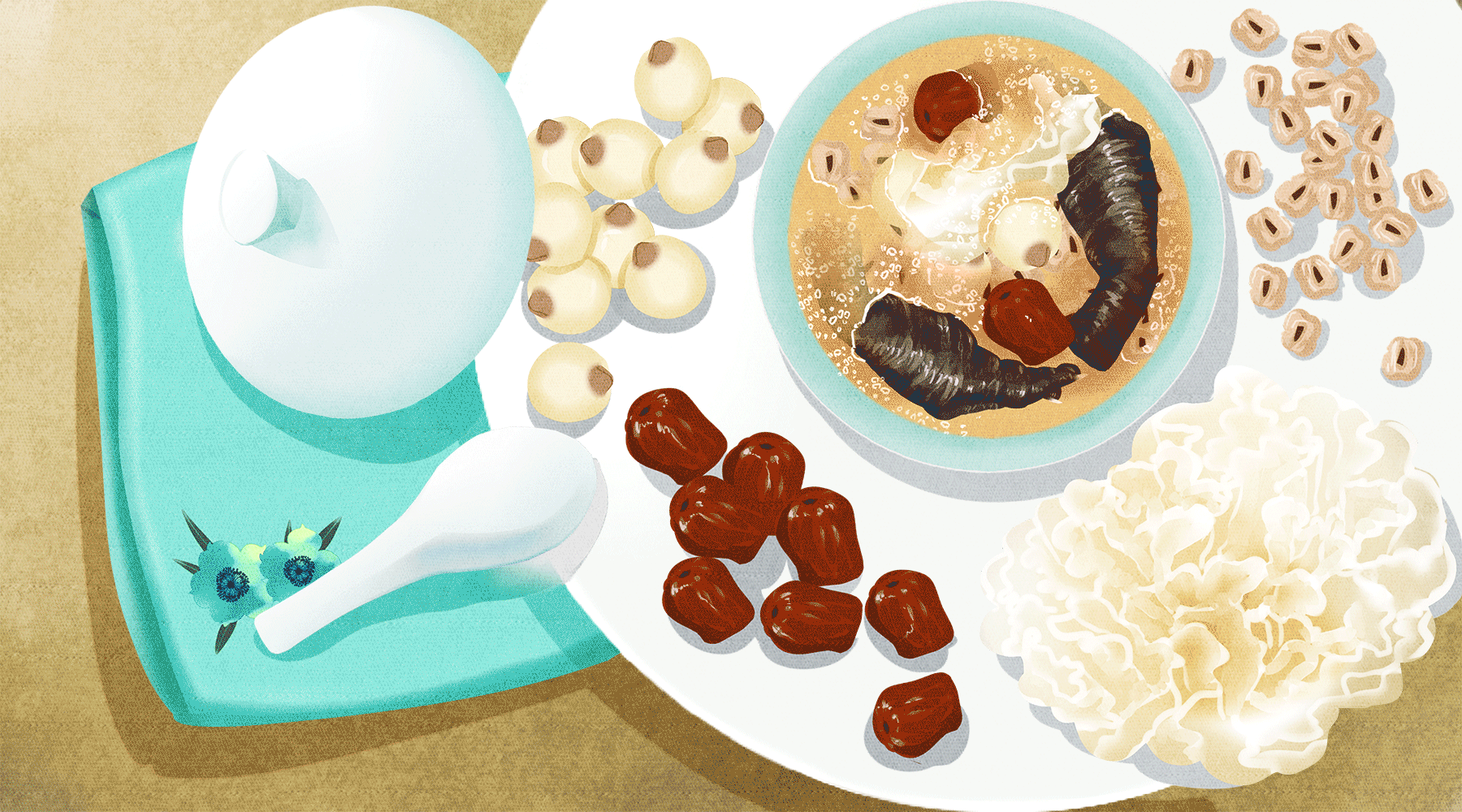01:02

The Lantern Festival arrives as the first full moon of the new lunar year lights up the sky.
Known as Yuan Xiao Jie in Chinese, it falls on February 26 this year. As one of major traditional Chinese festivals, it is celebrated on the 15th of the first lunar month, marking the end of celebrations of the Chinese New Year.
It is time to admire lanterns, guess lantern riddles and watch lion or dragon dances and art performances.
In addition to diverse lanterns and games, another important tradition of the festival is eating glutinous rice balls, known as yuanxiao or tangyuan. In various regions across China, people prepare different foods to mark the occasion.

People admire lanterns, guess lantern riddles and watch lion or dragon dances and art performances during the Lantern Festival. /CFP
People admire lanterns, guess lantern riddles and watch lion or dragon dances and art performances during the Lantern Festival. /CFP
Yuanxiao or Tangyuan: A symbol of the moon
Yuanxiao are popular in northern China while tangyuan dominate the south. They are both soft glutinous rice balls with fillings.
Although similar in appearance, there are some differences in terms of making, fillings, cooking and even storage.
Yuanxiao are made by rolling, usually in a basket. The surface of the balls tends to be dry and soft and the fillings are sweet and somewhat solid. Tangyuan, however, are kneaded by hand. They have a glutinous surface and come with a variety of soft fillings.

In addition to diverse lanterns and games, another important tradition of the Lantern Festival is eating glutinous rice balls, known as yuanxiao or tangyuan. /CFP
In addition to diverse lanterns and games, another important tradition of the Lantern Festival is eating glutinous rice balls, known as yuanxiao or tangyuan. /CFP
Yuanxiao should be boiled for at least 10 minutes, while tangyuan can be served after around five minutes of cooking. The former have shorter durability period while the latter can be stored for longer time when kept in cold environment.
Round like the moon, and served in a round bowl, they are both must-have snacks during the Lantern Festival. The practice of eating these rice balls is a way of paying homage to the moon and praying for family reunion, harmony and happiness.
Delicious and auspicious dishes
Yuanxiao and tangyuan are most common dishes served during the festival. The sheer size of the country, however, means that festival foods also vary by different places.
Generally though, Chinese people believe that the dishes should all have one thing in common – they should have auspicious connotations.

In Taizhou, east China's Zhejiang Province, people eat a special dish called geng – a type of thick soup or gravy in Chinese cuisine – on the eve of the Lantern Festival after admiring lanterns. /CFP
In Taizhou, east China's Zhejiang Province, people eat a special dish called geng – a type of thick soup or gravy in Chinese cuisine – on the eve of the Lantern Festival after admiring lanterns. /CFP
In south China's Guangdong Province, people prepare lettuce in advance to eat during the Lantern Festival as a vegetable. Called shengcai in Chinese, the name of the dish sounds similar to the Chinese characters that mean "making money."
Due to this special association, lettuce is a common ingredient used in dishes served during various festivals in southern China.
In central China's Henan Province, jujube cake is a traditional delicacy enjoyed during the Lantern Festival. It was originally a dessert served for royal families during the Qing Dynasty (1644-1911).
Made of jujubes and sweet rice, the cake has a sweet fragrance and is symbolic of fortune and happiness.

In central China's Henan Province, jujube cake is a traditional delicacy enjoyed during the Lantern Festival. /CFP
In central China's Henan Province, jujube cake is a traditional delicacy enjoyed during the Lantern Festival. /CFP
In Taizhou, east China's Zhejiang Province, people eat a special dish called geng – a type of thick soup in Chinese cuisine – on the eve of the Lantern Festival after admiring lanterns.
Locals usually fry shredded pork with veges, such as bamboo shoots, shiitake mushrooms, fungus and spinach, then add some water and a little rice noodles and boil them into a salty thick soup called zao geng.
During the Lantern Festival, locals would make sweet zao geng, mainly featuring sweet potato flour boiled with lotus seeds, sweet dates and longan, as a symbol of colorful life and prosperity.
Additionally, people living in some regions in northern China also eat traditional lucky foods like noodles and dumplings during the festival for longevity, health and wealth.
Video edited by Yu Yingtian
Cover image by Li Wenyi

